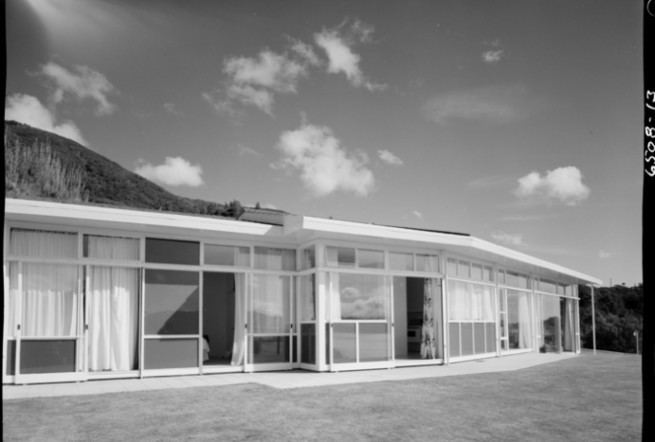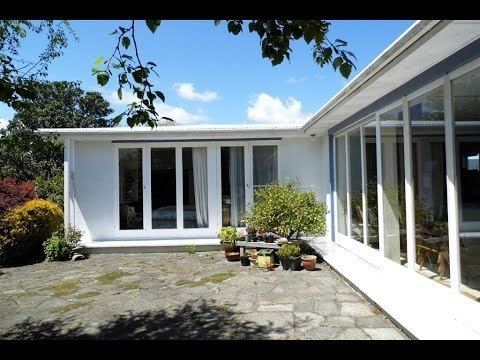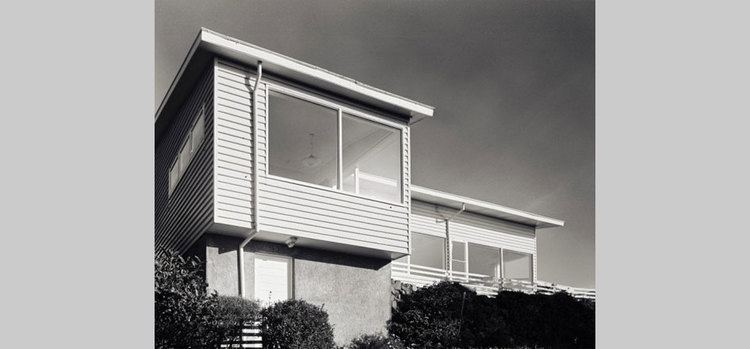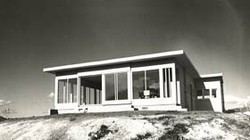Name Ernst Plischke Role Architect | ||
 | ||
Education Academy of Fine Arts Vienna | ||
Sold ernst plischke design 124 park rd belmont lower hutt
Ernst Anton Plischke (1903 – 23 May 1992) was an Austrian-New Zealand modernist architect, town planner and furniture designer whose work is well known throughout Europe and New Zealand.
Contents
- Sold ernst plischke design 124 park rd belmont lower hutt
- Early years
- New Zealand architect
- Back to Vienna
- References

Early years

Plischke was born in the town of Klosterneuburg near Vienna, Austria in 1903 to a father that was an architect and a mother from a family of cabinet-makers. From an early age he spent time in workshops and studios, before going to study interior and furniture design at Vienna's College of Arts and Crafts.

At the age of twenty, influenced by his father to become an architect he was accepted into a Master School run by leading architect Peter Behrens. His architecture as a student reflected the dynamic and repetitious nature of the early modernist style.
After graduating from the academy in 1926, Plischke worked in Peter Behrens's private office, and in 1929 travelled to New York to work but the start of the great depression ruined this opportunity.

In 1930, he was commissioned to build the Labour Exchange building in Liesing by the Austrian government. Completion of this in 1931 made him one of Austria's leading architects.

One of the Plischke's early houses The Gamerith House at Lake Attersee, foreshadows his later work in New Zealand. The house fits into the surrounding landscape and holds a boat-like quality.

In 1935, he was married to Anna Lang-Schwizer and awarded the Austrian State Prize for architecture.
In 1938, Germany occupied Austria. German law meant that all architects had to become part of a centralised Chamber of Arts. Because his wife was Jewish, he was not accepted into the Chamber of Arts. This reason along with the banning of modernist buildings by the German occupation led Plischke to move to New Zealand in 1939.
New Zealand architect
When Plischke arrived in New Zealand in 1939 with his wife Anna, he was already known in architectural circles to be at the forefront of modernist design. He began working for the Ministry of Housing on projects such as the Dixon St Flats. From 1943–47 he worked for the Department of Town Planning producing work in areas including: Naenae, Trentham, Tamaki and Mangakino. He also completed private work during this time, including the Frankl House in Christchurch.
Plischke and his family struggled to integrate into New Zealand society, due to prejudices against their nationality at the time. Plischke found it harder to be accepted by New Zealand architects. He felt he was already a fully qualified architect and internationally renowned, and so wasn't prepared to take examinations to become a registered architect with the New Zealand Institute of Architects.
In 1947, the Government of New Zealand gave a desk made to a design by Plischke as their official wedding gift to Princess Elizabeth.
In 1947, he applied to be chair of design at the School of Architecture at Auckland University College. He wasn't accepted, so as an unregistered architect he sought out a partnership with a registered architect. In 1948 he formed the 'Plishke & Firth' partnership with Cedric Firth. Massey House (1951–1957) located on Lambton Quay was their biggest project, with Plischke designing the concept due to Firth being abroad. The partnership ended in 1959 and Plischke joined Robert Fantl in another partnership, but with work drying up in the early 1960s Plischke accepted an academic role back in Vienna, Austria.
Back to Vienna
Leaving behind his adopted country, in 1963 Plischke took up the role of Professor of Architecture at the Academy of Fine Arts in Vienna. Teaching and writing took up much of his time during the last decades of his life. A couple of significant books he wrote were Vom Menschlichen im neuen Bauen (‘On the human aspect in modern architecture’) and a Biography; Ernst A. Plischke; Ein Leben mit Architektur. Austria also rewarded him with a number of awards; Austrian Cross of Honor for Science and the Arts, First Class (1973) and the Golden Medal of Honor for Science and the Arts (1988). He was made Honorary Member of the Academy of Fine Arts Vienna (1983), Honorary Member of the American Institute of Architects (1987) and Honorary Member of the Austrian Society for Architecture (1988).
Plischke died aged 89, in Vienna on 23 May 1992.
